I remember 15 years ago in Iran, there was no such thing as manteau showrooms, manteau fashion shows, or manteau order forms on Facebook. There were only the big, mass market shops in Haft-e Tir Square that sold long, loose manteau, or private seamstresses who would sew you an attractive manteau for a fairly large amount of money. My aunt took me one day to Haft-e Tir and made me buy a long black manteau with ugly plastic buttons. I felt like crying, in fact I probably did cry, when putting it on. I was young and wanted to look pretty. At least not as though I had been erased by a giant piece of black cloth. “There's nothing else,” she told me, and we walked out with that manteau. She bought me a piroshki to cheer me up, and I remember thinking, why not, there was room for me and a 100 piroshkis under there anyway.
That Haft-e Tir day came to mind recently when I encountered the spring collection of Poosh, by the talented young designer Farnaz Abdoli. The clothes were startling, somehow elegant, edgy and Eastern all at once, and clearly intended for trouble-free wear on the streets of Iran. I was curious to know who was behind these styles, which were so boldly re-imagining the manteau and the sort of clothes that could be worn within its confines. For me, the designs underscored just how much Iran has changed in the past 15 years, moving away from that old bazaar of homogeneity -- back when looking different was either highly time consuming or highly expensive -- toward a new and mainstream vitality in women’s dress.

At the heart of this transformation is a single garment: the manteau, whose evolution from the drab smocks of Haft-e Tir to the height of today's fashion tells us a broader story about women in Iran and the possibilities for change. The manteau, though an imposed garment, is proving remarkably flexible to change.
Of the movement underway in today’s Iran, Abdoli’s line of street fashion is the most innovative and stylistically ambitious. Coming to fashion from the world of graphic design, which she studied at arts college and then university, Abdoli brings an attention to visual art and formal composition to her work. Her designs employ a visual language and convey a whole sensibility -- whimsical, often literary and playful -- that her fans also enjoy following on Facebook.
In the 2000s, when she started working in Tehran in her early twenties, she decided to pursue a line of street style, a casual, more bohemian look that to date had been absent in Iran. “People kept telling me I was putting my finger on a sensitive spot, that I’d create trouble for myself, but I was keen to see where it could lead,” she says, with a slight laugh.

Though her designs are often technically compatible with state dress codes, long and flowing with proper sleeves, they are still innovative, combining folds and dress, abaas and shalwar kameez, dresses and smocks, in fresh interpretations of what can be deemed permissible. She struggled in naming her first collection, eager to avoid the term manteau, which her designs decidedly were not, and settled upon the term “street clothes.”
Women reacted skeptically, demanding on Facebook whether her clothes were really wearable, and her page became a forum to discuss these concerns. “There was some dogma involved, people were looking at the clothes through their own mental framework,” she says. “But I pushed them to think about why it couldn’t be worn, I asked them, 'if it’s long, it’s comfortable, what’s the problem?’” She realized in the end that women were worried about drawing attention to themselves for looking different. In her two shops in Tehran, she describes how women eyed what others were buying, and took their cues. “Slowly people realized they could wear it without trouble, a sort of collective courage emerged.”
Poosh's latest spring collection provoked an outcry in conservative websites earlier this year, when the site Bultan News attacked it as “the spring prostitution campaign”, accusing Abdoli of offending morality in a fashion plot coordinated by “outside elements.” Outraged comments on the site cried for the “intervention of the clerics,” and lamented the lack of ‘"gheyrat’ in northern Tehran, viewed as the locale for such sartorial transgression. The furor spread over Facebook, and Abdoli says what was intended as a work of fashion originality within the restrictions was interpreted as taboo breaking, an offense to people’s morality that she never intended.

“I wear these clothes, my sister wears them, and we need to feel secure when we’re walking down the street together,” she says. That dignity of not being harassed, either by morality police or even ordinary citizens, is central to her work. If anything, her collections are remarkable for their promotion of a more down to earth look, with a noticeable absence of any logo or designer accessories, and models who are minimally made up by Iranian standards. If she is pushing the boundary of what constitutes a manteau, she’s doing so with less sexualized images of women, and a reminder that simplicity is also beautiful.
If Abdoli is experimenting with how far the manteau can pushed, there’s also a boom in designers working successfully around its traditional form. Many young manteau designers say the atmosphere today is open enough to encourage both inspiration and real entrepreneurship. They say demand is high, reflecting a wider market for manteau -- a distinctly modern, Iranian garment -- than any time in recent history.
If clothes are a marker of how a society experiences change, then the rise of the manteau reflects just how dramatically Iranian society and values have been transformed in the past forty years. Until the 1970s, women in Iran dressed with great variation and mainly according to social background: rural women and those in smaller cities favoured chador chit or floral chador , less religious urban middle-to-upper class women wore Westernized clothing, while the black chador was mainly worn in big cities by traditional and ultra-orthodox religious women.
The manteau only emerged in the 1970s as a political statement by young, educated women, many devoted to leftist or modern Islamist ideals. But after 1979, when the revolutionary government sought to impose black chador on all Iranian women, the meaning of both chador and manteau were transformed. In the early 1980s, a spectrum of women who might have looked nothing like each other on a pre-1979 street began to embrace the manteau as a compromise.

Even for religious women, says the scholar Ziba Mir-Hosseini, the chador declined as the superior form of hejab hejab-e bartar, as society began to equate black chador with extremist-political-state Islam. “The hejab as protest started up again, with women choosing themselves what to wear, with individual tastes,” she says. “The chador’s message became hezbollahi, and the manteau’s message became modern, reformist Islam.”
These shifts mean that the manteau today is performing multiple duties: the shared dress of secular women who wear hejab only because it’s legally required, to religiously observant women from traditional families. In between are the multitudes of women who are slightly religious, who dance at mixed family parties and have boyfriends, but fast during Ramadan and wouldn’t call themselves secular. These women require clothes that reflect that mixed identity, and for them, the fashion manteau revolution is an acknowledgement of their very existence.
Some manteau designers, like Ava Farsad and Elnaz Asl, work imaginatively with textile and cut, while staying within the confines of what society agrees is a manteau. Asl describes an open climate where there is high demand and ease of work, and an Culture and Islamic Guidance Ministry approved Group for Iranian Dress Desingers. Three of her pieces were featured in the fashion show of the Fajr Film Festival. She describes customers who shop in her showroom with husbands who advise them on sleeve length and openness of a collar: “In design, I don't accept any limitations, the customer picks and according to her choices, we start to limit the manteau.”
Farsad works with bright colors and a fresh range of textiles, but follows the officially approved manteau’s conventions of length and cut. She’s keen to develop her brand and operate on a large scale for a wide market of customers. She doesn't do catwalks, and many of her clients are veiled women looking for manteau they can work at the workplace and in private settings. “I don’t like working underground, I don’t want any headache,” she says.
What struck me the most in reporting this piece was that all of the designers I spoke to were excited and inspired by their work, and viewed the restrictions they faced as creative challenges rather than an inhibition. Perhaps they had to say that when talking to a journalist, but I felt they were sincere. Abdoli, for example, chose herself not to head to Milan or Paris at the start of her career; she saw those places as saturated, and wanted the challenge of producing effective, wearable designs in Iran.
Everyone agreed that the terrible economy was affecting their businesses to a certain degree, with materials growing more expensive and clients who previously bought five manteau a year now down to perhaps just two.
They all said that they wore their own designs on the streets of Iran without hassle, though Abdoli was honest on this point: “These aren’t clothes for going to the supermarket or the vegetable seller or taking a walk in Park Mellat. Some people want to hit 150 targets with just one arrow.” Perhaps that desire is actually for something broader that has yet to come: the ability to wear the same clothes in every corner of one’s city, a life in which that is possible.
visit the accountability section
In this section of Iran Wire, you can contact the officials and launch your campaign for various problems





















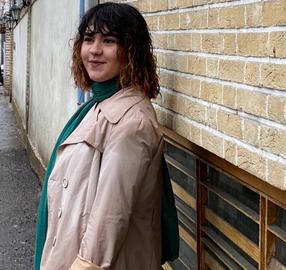
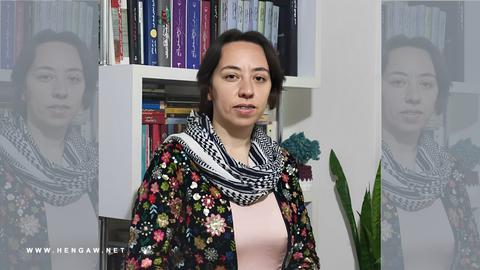


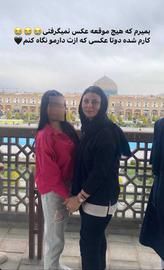

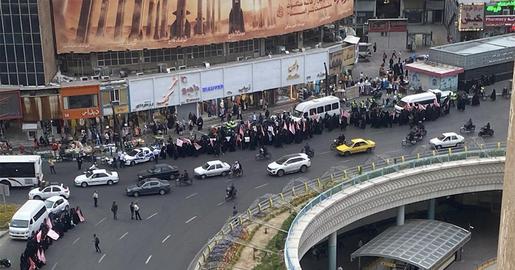
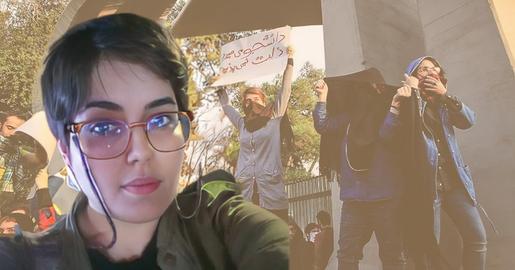

comments